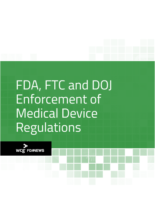
Home » China’s Medical Device Market: Opportunities for U.S. Industry ‘Better than Ever’
[SPONSORED CONTENT]
China’s Medical Device Market: Opportunities for U.S. Industry ‘Better than Ever’

July 20, 2017
By Michael Levin-Epstein
With double-digit growth for over a decade, China’s medical device market is one of the fastest growing sectors in the country. Many view China as a priority market with strong demand, an improved regulatory environment, and a number of new business opportunities.
The U.S. Trade and Development Agency (USTDA) is connecting American companies to these opportunities. On July 25, 2017, USTDA is hosting a workshop where U.S. providers can meet with 22 senior officials from China’s Food and Drug Administration (CFDA), the agency that regulates medical devices, food, and pharmaceuticals.
Currently, China is working to streamline the process of importing medical devices, which includes allowing U.S. providers to produce their devices in China and collaborate with local manufacturers.
This is good news for U.S. companies looking to access the market, although they still face challenges.
Progress and Improvement
“The approval process for medical devices is longer in China than in other countries, but it is improving,” says Jeffrey Gren, a former top official at the U.S. Department of Commerce, where he played a leading role in developing U.S.-China trade initiatives in the pharmaceutical and medical device space.
“Sometimes China requires duplicate inspections of manufacturing facilities, and there can be redundant testing,” Gren adds. “Also, China has been relatively slow to adopt standards after they are approved in other markets, which can cause a problem for manufacturers, with one set of criteria for most of the world, and another set for China.”
Another barrier to market entry involves additional clinical trial requirements, on top of those already met in the country of origin.
China is addressing some of these challenges and continues to make significant investments in healthcare reform. At USTDA’s workshop and corresponding training, leaders from CFDA will meet with U.S. experts who will share best practices and leading technologies that can help China achieve its goals.
Top Prospects for U.S. Companies
U.S. providers can approach new opportunities in China by partnering with local companies. They can also sell medical devices directly to China, manufacture components and parts in country, and work in collaboration with other U.S. companies to do business in country.
Currently, some of the best prospects in the medical device sector in China are:
- In vitro diagnostic equipment and reagents
- Orthopedic equipment and products
- Implantable and intervention materials and artificial organs
- Therapeutic products
- Medical diagnostic and imaging equipment
- Surgical and emergency appliances
- Healthcare information technology-related equipment and products
- Medical equipment parts and accessories
U.S. businesses can learn more about China’s medical device needs and goals at USTDA’s public-private workshop on July 25, 2017. This event presents a unique opportunity for the public and private sectors to meet with key CFDA officials and develop new business partnerships.
For more information on the workshop and to register, please visit http://phmintl.com/china-fda/.
Upcoming Events
-
21Oct

